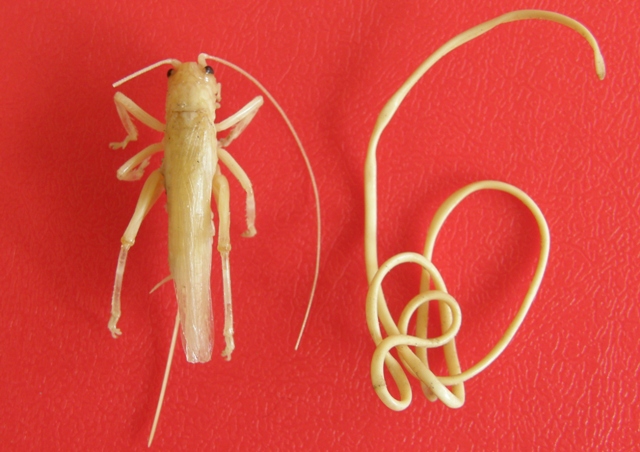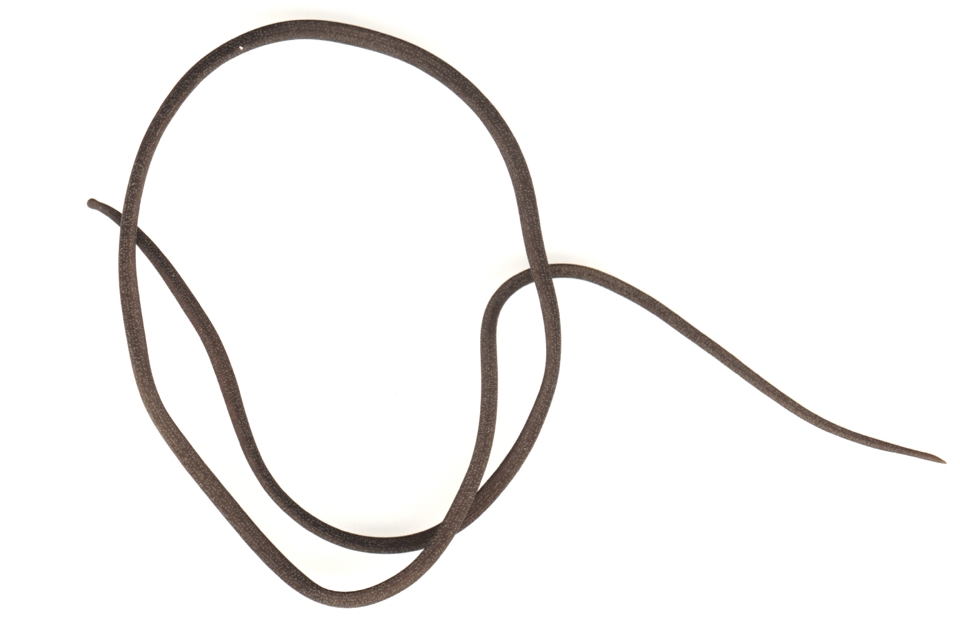Phylum Nematomorpha, Class Gordioida
Common names: horsehair worms, gordian worms
Overview
Nematomorphs are a phylum of worms which are very small, short and translucent as larvae and very long, thin, coloured and opaque as adults. All nematomorphs are parasitic in insects for part of their life cycle and are also found living free in the environment for another part of their life cycle. The pre-parasitic larvae and post-parasitic adults are found in damp or wet habitats, often close to the cadaver of the former host. Larvae can be found in huge numbers under appropriate conditions, but the large adults are found in small numbers only. Nematomorphs range in size from 0.1 mm to 50 cm long and 5 �m to 5 mm diameter. Nematomorphs are a well defined phylum quite unlike any other animal, but their evolutionary relationship to other phyla remains unclear. They have been thought related to rotifers, nematodes and other small phyla in a group known as aschelminths, but other evidence points to a relationship with platyhelminths.
Distribution and diversity
Gordian worms have been found on every continent except Antarctica. There are an estimated 1000 species worldwide, of which only around 300 species have been formally described. All freshwater nematomorphs are within the class Gordioida; the other class within Nematomorpha, Nectonematoida, only contains a few poorly documented marine species. There are only ten species described in Australia; five species of the genus Chordodes in the family Chordodidae, and three genera from the family Gordiidae (Acutogordius, Beatogordius and Gordius).
Life cycle
Freshwater nematomorphs have a very uniform life cycle and separate sexes. A distinctive larva hatches from the egg, which enters a host by ingestion or active penetration. Common hosts include crickets, grasshoppers, beetles, cockroaches, centipedes and millipedes. The larva moults several times and grows into the adult form inside the host, but sexual maturity is only attained after leaving the host. By the time of emergence, the nematomorph may be many times the length of the host. The nematomorph emerges from the host when it is near water, killing the host. After leaving the host, nematomorphs do not feed. They attain sexual maturity and mate, with the male coiling tightly around the female. A very large number of eggs are laid in a string either in water or on vegetation near water. The life cycle may be between about a month and a year.
Feeding
All nematomorphs derive all their nutritional requirements as internal parasites of insects: the stages found outside the host do not feed.
Ecology
Most species of nematomorph live in freshwater environments, with five species from the genus Nectonema known to occur in marine habitats. They can sometimes be found in large knots comprising up to dozens on individuals, giving them their common name �Gordian worms�. This comes from the legend that Gordius, King of Phrygia, tied his plough in a temple with an intricate knot and it was declared that whoever untied it would rule Asia.

Nematomorphan with host
Image credit: � Jan Anderson
used with permission

Nematomorpha Chordodes
Image credit: Photographer: Erich S. Volschenk
� Western Australian Museum








